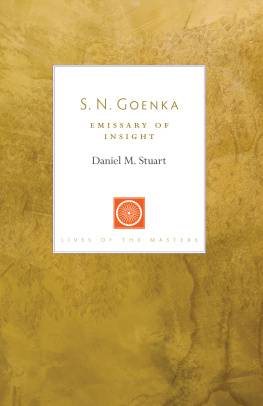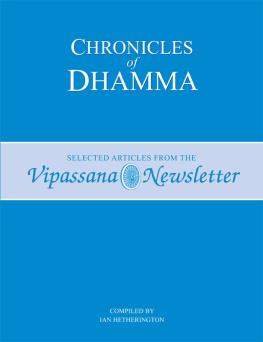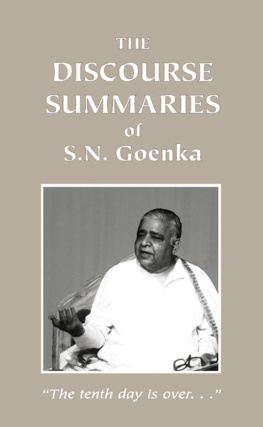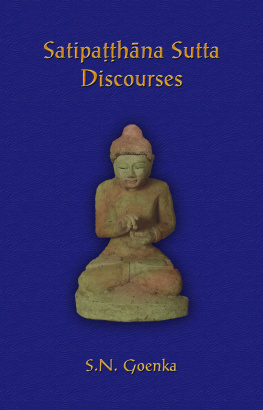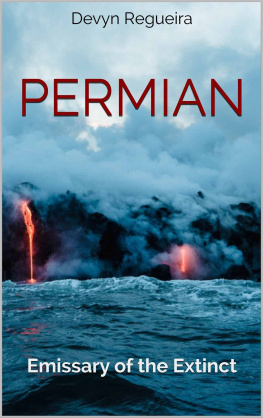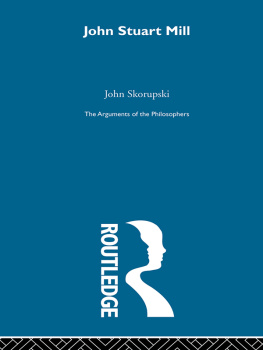Daniel M. Stuart - S. N. Goenka: Emissary of Insight
Here you can read online Daniel M. Stuart - S. N. Goenka: Emissary of Insight full text of the book (entire story) in english for free. Download pdf and epub, get meaning, cover and reviews about this ebook. year: 2020, publisher: Shambhala, genre: Religion. Description of the work, (preface) as well as reviews are available. Best literature library LitArk.com created for fans of good reading and offers a wide selection of genres:
Romance novel
Science fiction
Adventure
Detective
Science
History
Home and family
Prose
Art
Politics
Computer
Non-fiction
Religion
Business
Children
Humor
Choose a favorite category and find really read worthwhile books. Enjoy immersion in the world of imagination, feel the emotions of the characters or learn something new for yourself, make an fascinating discovery.
- Book:S. N. Goenka: Emissary of Insight
- Author:
- Publisher:Shambhala
- Genre:
- Year:2020
- Rating:3 / 5
- Favourites:Add to favourites
- Your mark:
- 60
- 1
- 2
- 3
- 4
- 5
S. N. Goenka: Emissary of Insight: summary, description and annotation
We offer to read an annotation, description, summary or preface (depends on what the author of the book "S. N. Goenka: Emissary of Insight" wrote himself). If you haven't found the necessary information about the book — write in the comments, we will try to find it.
S. N. Goenka: Emissary of Insight — read online for free the complete book (whole text) full work
Below is the text of the book, divided by pages. System saving the place of the last page read, allows you to conveniently read the book "S. N. Goenka: Emissary of Insight" online for free, without having to search again every time where you left off. Put a bookmark, and you can go to the page where you finished reading at any time.
Font size:
Interval:
Bookmark:
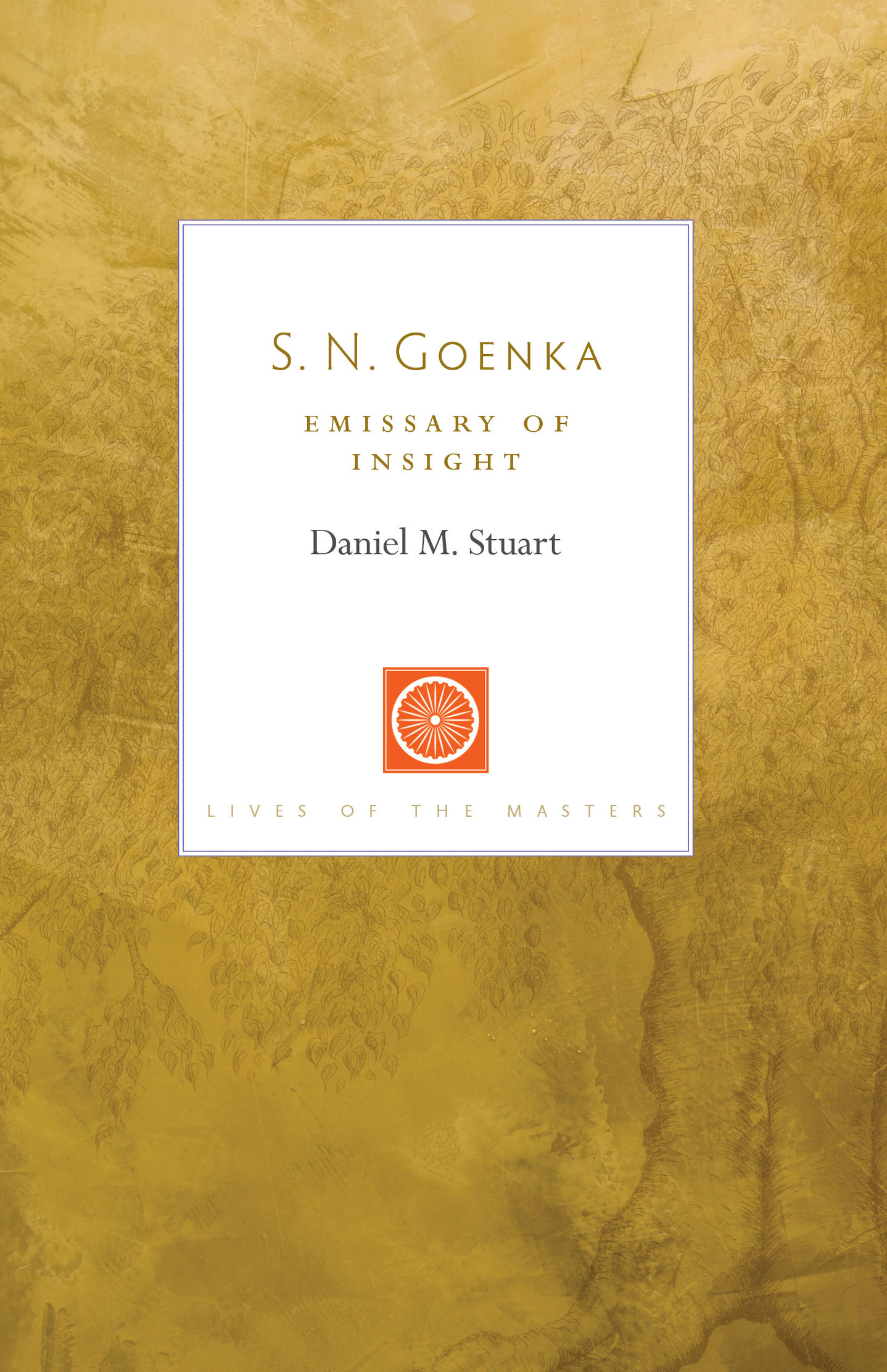
LIVES OF THE MASTERS
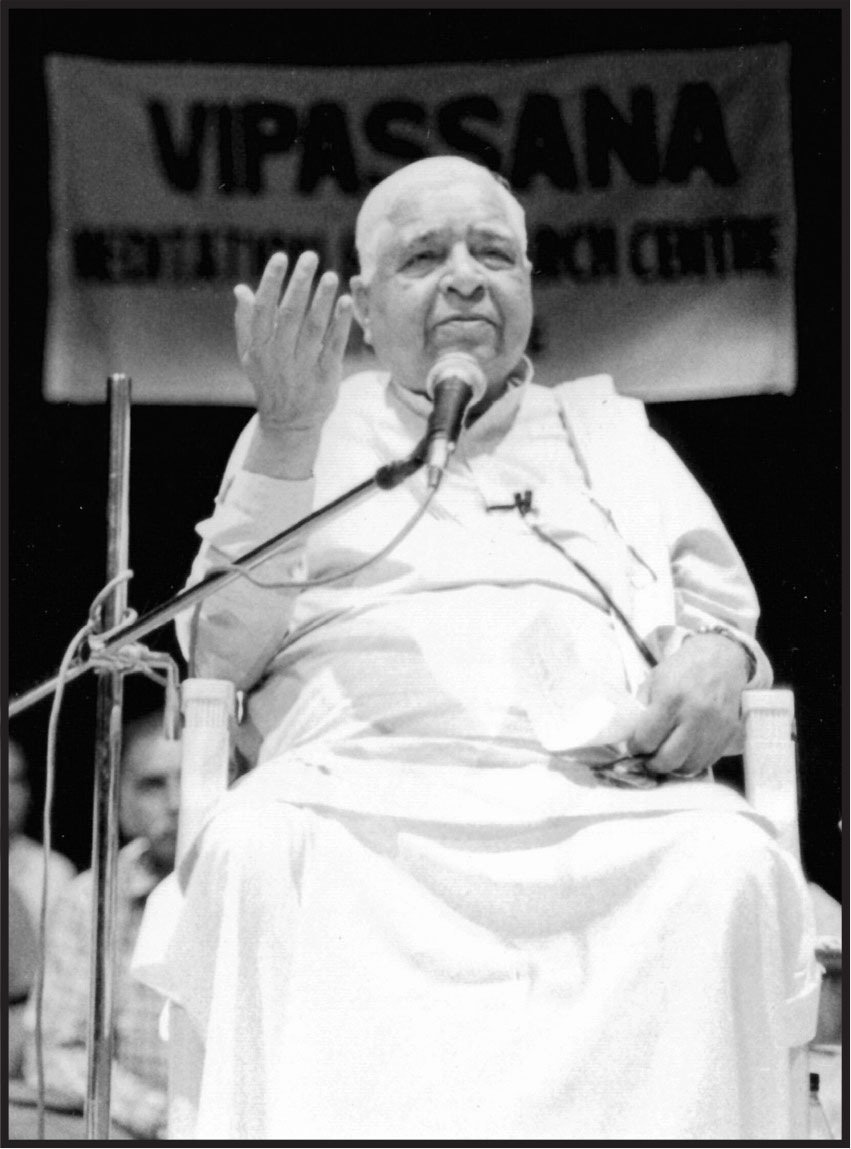
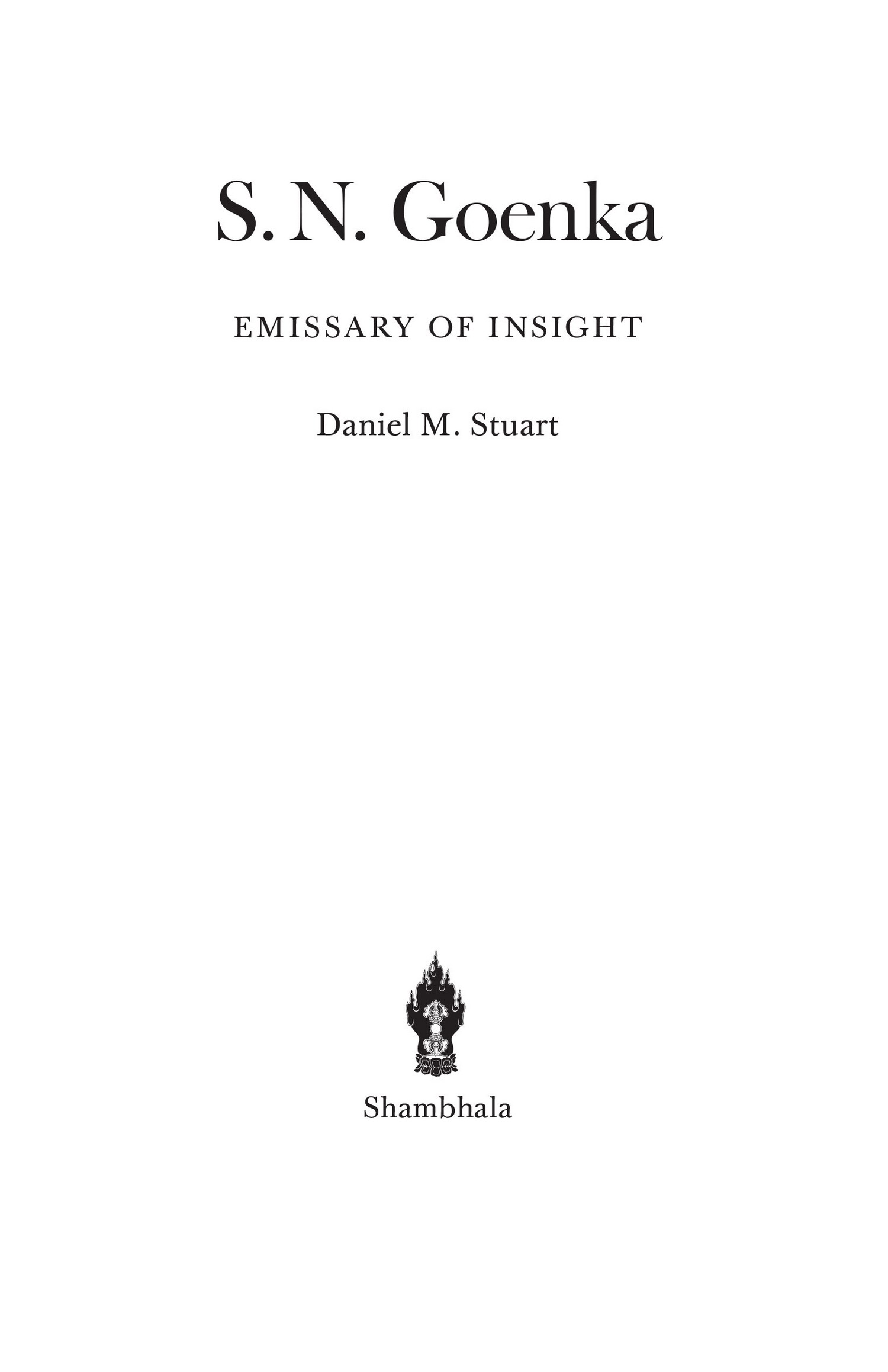
Shambhala Publications, Inc.
4720 Walnut Street
Boulder, Colorado 80301
www.shambhala.com
2020 by Daniel M. Stuart
FRONTISPIECE : Photo courtesy of Daniel M. Stuart
Cover art: Robert Fenwick May, Jr.
Cover design: Gopa and Ted2, Inc.
All rights reserved.
No part of this book may be reproduced in any form or by any means, electronic or mechanical, including photocopying, recording, or by any information storage and retrieval system, without permission in writing from the publisher.
LIBRARY OF CONGRESS CATALOGING - IN - PUBLICATION DATA
Names: Stuart, Daniel Malinowski, author.
Title: S. N. Goenka: emissary of insight / Daniel Stuart.
Description: First edition. | Boulder, Colorado: Shambhala, [2020] |
Series: Lives of the masters | Includes bibliographical references and index.
Identifiers: LCCN 2019049592 | ISBN 9781611808186 (trade paperback)
eISBN 9780834842953
Subjects: LCSH : Goenka, S. N., 19242013. | TeachersIndiaBiography. | MarwarisBiography. | Vipayan (Buddhism)
Classification: LCC BQ 960. O 89 S78 2020 | DDC 294.3092dc23
LC record available at https://lccn.loc.gov/2019049592
a_prh_5.6.0_c0_r0
B UDDHIST TRADITIONS are heir to some of the most creative thinkers in world history. The Lives of the Masters series offers lively and reliable introductions to the lives, works, and legacies of key Buddhist teachers, philosophers, contemplatives, and writers. Each volume in the series tells the story of an innovator who embodied the ideals of Buddhism, crafted a dynamic living tradition during his or her lifetime, and bequeathed a vibrant legacy of knowledge and practice to future generations.
Lives books rely on primary sources in the original languages to describe the extraordinary achievements of Buddhist thinkers and illuminate these achievements by vividly setting them within their historical contexts. Each volume offers a concise yet comprehensive summary of the masters life and an account of how he or she came to hold a central place in Buddhist traditions. Each contribution also contains a broad selection of the masters writings.
This series makes it possible for all readers to see Buddhist masters as deeply creative and inspired people, whose work was animated by the rich complexity of their time and place, and how these inspiring figures continue to engage our quest for knowledge and understanding today.
K URTIS S CHAEFFER , series editor

S. N. Goenka and Illaichidevi Goenka in 1976, meditating together at the formal ceremony for laying the foundation of the meditation pagoda at Goenkas first meditation center in India, Dhamma Giri. Courtesy of the Vipassana Research Institute.
I T IS A DIFFICULT task to write a historical and critical book about ones own meditation teacher. It is an even more difficult task to write about a personality like S. N. Goenka, one of the most influential meditation teachers of the twentieth century.
Like many, I first met Goenka by way of video and audio recordings, on one of his ten-day courses in the North Indian city of Jaipur in the state of Rajasthan. Though it took place more than two decades ago now, it was an encounter that I will never forget. It set me on a path to study the teachings of the Buddha, and I find it unlikely that I would be a professor of Buddhist studies today were it not for that first remote encounter with the man I now think of as my teacher.
I feel lucky that I encountered Goenka and his teachings in India and that I felt the urge early on to understand the Asian contexts from which his teachings emerged. This led me to study Pali, Hindi, Sanskrit, and a number of other traditional languages in which the teachings of the Buddha have been transmitted. It also led me to want to spend time in Asia and look as deeply as I couldwith my limited capacitiesat the sociocultural dynamics at work in the various contexts in which I found myself.
This book is based on more than a decade of formal historical and ethnographic research, as well as an additional decade of personal engagement with practices and communities around the globe that owe their inspiration to this great teacher of vipayan meditation. I began a formal, ethnographically informed, historical study of Goenka and his movement in 2008. Since that time, I have spent a combination of more than four years in India carrying out fieldwork and many more years working on archival material relevant to the history of the tradition. Since I have worked on a number of other projects during this time and have published several other books, this research material has had to wait for publication.
But it has also had to wait because I have, at times, found it painful to analyze the actions and identities of Goenka and his close disciples in the light of historical perspective. These are people whom I love and respect. It is a challenging thing to write critically about a living community of which one is a part. It is even more difficult when this community is built on cherished spiritual ideals that many feel are inviolable. I have taken up the task of writing this short work primarily because of my great reverence for S. N. Goenka, but also because I feel that he has been misunderstood and misrepresented by many, including some of his own students. My hope is that a critical and informed perspective on the life of this great master, and the role he played in the dissemination of the Buddhas teachings in modernity, will prove helpful to anyone interested in those teachings.
My sense is that many will find this book strange. There is no genre in which it fits. Is it a hagiography of a great saint? A historical biography of an influential man? Is it a critique or a sympathetic account of the man at the center of the story? In carrying out research on Goenka and his organization over the past decade, and also in looking more broadly at a range of historical occurrences that developed in parallel with him, my sense is that to capture what has gone on requires us to write and think both within and above such categories. This means, however, that many will find this nongenre biography and collection of writings and teachings somewhat puzzling, perhaps even alienating. I encourage readers to investigate that puzzlement. This is where we may find S. N. Goenka as a man and S. N. Goenka as a community.
Since I am quite critical in the following pages of those who have chosen to overlook certain aspects of Goenkas life and legacy, I would be remiss if I were not to acknowledge that much has been deliberately overlooked in this book as well. While I try to show that Goenka was a complex person with a complex story, many of the more problematic issues of his identity, his mission, and his organization cannot be addressed in a short, schematic book such as this. These include issues of caste and untouchability in India; gender bias and conservatism; powerful strains of homophobia within the organization; cult dynamics and group behaviors; the specifics of meditative experiences induced on the courses Goenka taught; Goenkas personal relationships with individual students, as well as those individual students roles in supporting his mission; many episodes and formative moments of Goenkas life that simply could not fit; and meta-level questions about ontologies and metaphysical commitments. These issues and many more must be addressed in other contexts, and I hope they will be.
Font size:
Interval:
Bookmark:
Similar books «S. N. Goenka: Emissary of Insight»
Look at similar books to S. N. Goenka: Emissary of Insight. We have selected literature similar in name and meaning in the hope of providing readers with more options to find new, interesting, not yet read works.
Discussion, reviews of the book S. N. Goenka: Emissary of Insight and just readers' own opinions. Leave your comments, write what you think about the work, its meaning or the main characters. Specify what exactly you liked and what you didn't like, and why you think so.

